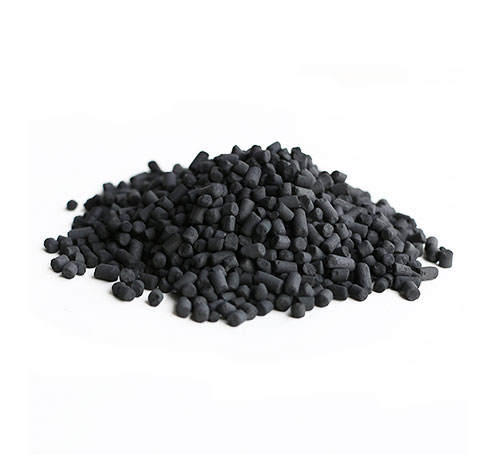Activated Alumina Catalyst is derived from aluminum oxide, this catalyst has become an indispensable tool across a spectrum of applications, revolutionizing everything from water treatment to petrochemical refining.
In this blog, we'll delve into the fascinating world of activated alumina catalyst, exploring its properties, applications, and the transformative impact it has on industries worldwide.

Contents
What we will talk about in this article?
Understanding Activated Alumina Catalyst
Activated alumina catalyst is not your ordinary industrial material. Through a meticulous activation process, aluminum oxide undergoes a transformation, resulting in a porous structure with an extensive surface area. This unique configuration imparts exceptional adsorption and catalytic properties to the material, making it a powerhouse in various industrial applications.
Applications Across Industries
1. Water Treatment:
Activated alumina catalyst plays a crucial role in water treatment processes. Its ability to adsorb impurities makes it a reliable choice for purifying water, ensuring access to clean and safe drinking water.
2. Petrochemical Refining:
In the petrochemical industry, activated alumina catalyst is a key player in catalytic cracking processes. It optimizes efficiency and yield, contributing to the production of valuable compounds essential for numerous applications.
3. Gas Drying and Dehydration:
The material's prowess extends to gas drying and dehydration applications. Whether it's natural gas processing or the removal of moisture in industrial gases, activated alumina catalyst excels in maintaining the desired quality of gases.
4. Hydrogen Production:
As the world seeks cleaner energy sources, activated alumina catalyst emerges as a catalyst of choice for hydrogen production. Its role in facilitating efficient and sustainable hydrogen generation is instrumental in advancing clean energy technologies.
Environmental Impact and Sustainability
Beyond its technical capabilities, activated alumina catalyst aligns with the growing emphasis on sustainability. Its use in environmental remediation, gas purification, and clean fuel production contributes to reducing environmental impact and fostering a more sustainable industrial landscape.
What Is Activated Alumina Catalyst Carrier?
An activated alumina catalyst carrier refers to a support material that is used to provide a structural framework for catalysts. In the context of activated alumina, it serves as a carrier for catalytically active substances. The carrier itself is often porous and has a large surface area, which can enhance the dispersion of the catalytic material and increase the overall efficiency of the catalyst.
Here's a breakdown of the key aspects:
Material Composition:
- The carrier is typically made of activated alumina, which is aluminum oxide that has been treated to create a porous structure. This activated alumina provides an ideal surface for supporting and anchoring catalytically active species.
Structural Support:
- The primary function of the carrier is to provide a stable and durable structure for the catalyst. This support is crucial to maintain the integrity of the catalyst during various industrial processes.
Surface Area and Pore Structure:
- Activated alumina catalyst carriers are chosen for their high surface area and well-defined pore structure. This characteristic helps maximize the contact area between the catalytically active material and the reactants, improving the catalyst's performance.
Catalyst Dispersion:
- The carrier plays a crucial role in dispersing the catalytic material evenly. This dispersion is essential for ensuring that the active sites of the catalyst are accessible to the reactants, promoting efficient catalytic reactions.
Applications:
- Activated alumina catalyst carriers find applications in various industries, including petrochemical refining, chemical synthesis, and environmental remediation. They are used in catalytic processes where the presence of a highly effective and stable catalyst is essential.
Catalyst Loading:
- Catalysts are often loaded onto the activated alumina carrier in a specific concentration to achieve the desired catalytic activity. The loading process involves impregnating or depositing the catalytic material onto the carrier.
What Is Activated Alumina Claus Catalyst?
The term "Activated Alumina Claus Catalyst" typically refers to a catalyst used in the Claus process for sulfur recovery in the oil and gas industry. The Claus process is a widely employed method to convert hydrogen sulfide (H2S) present in sour gas streams into elemental sulfur.
Here are the key aspects of the Activated Alumina Claus Catalyst:
Purpose:
- The primary purpose of the Activated Alumina Claus Catalyst is to facilitate the Claus process, which involves the conversion of hydrogen sulfide into elemental sulfur. This process is crucial for reducing sulfur emissions from industrial operations.
Composition:
- The catalyst is often composed of activated alumina, which is aluminum oxide with a porous structure. The specific composition may include additional elements or promoters to enhance catalytic activity.
Catalytic Activity:
- Activated alumina serves as a catalyst in the Claus reaction, where hydrogen sulfide reacts with oxygen to form sulfur dioxide, and then sulfur dioxide reacts with hydrogen sulfide to produce elemental sulfur. The catalyst promotes these reactions, facilitating the conversion of hydrogen sulfide to elemental sulfur.
High Surface Area:
- The activated alumina in the catalyst provides a high surface area with numerous active sites. This structural feature is crucial for optimizing the adsorption and catalytic conversion of sulfur compounds.
Sulfur Recovery Efficiency:
- The use of an activated alumina catalyst in the Claus process enhances the overall efficiency of sulfur recovery. It helps maximize the conversion of hydrogen sulfide to elemental sulfur, minimizing the release of sulfur compounds into the environment.
Application:
- Activated Alumina Claus Catalysts are commonly employed in sulfur recovery units in refineries, natural gas processing plants, and other facilities where sour gas is treated. The catalyst plays a key role in meeting environmental regulations by reducing sulfur emissions.
Regeneration:
- Over time, the catalyst may experience deactivation due to fouling or other factors. In some cases, the catalyst can be regenerated to restore its activity and extend its operational life.
Conclusion
Activated alumina catalyst is not merely a material; it's a catalyst for change. Its ability to drive efficiency, promote sustainability, and unlock new possibilities in various industries positions it as a cornerstone of modern industrial processes.
As we navigate towards a cleaner and more efficient future, activated alumina catalyst stands tall, catalyzing progress every step of the way.




